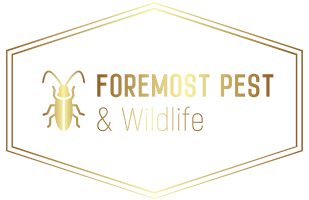It’s no secret that diligent homeowners recognize the need for termite inspections; however, many overlook the prospect of wildlife such as squirrels, raccoons, or bats until notable issues arise. This oversight can lead to costly damages, both structural and cosmetic, and in worst-case scenarios, uninvited tenants establishing themselves in your attic.
Yearly wildlife inspections are as crucial as those for termites, aimed at early detection of any intruding wildlife that may have begun to inflict damage on your home or, alarmingly, those that have already taken residence in spaces like your attic.
One of the most significant risks of having animals, particularly squirrels, nesting in your attic is the potential for fire hazards. These creatures can chew on electrical wiring which not only wreaks havoc on your electrical systems but also ignites nearly 20% of house fires. The cozy corners of your attic can quickly become a fire scene due to a shorted wire exacerbated by nesting materials.
Besides the imminent fire risk, these wildlife pests compromise the sanctity of your attic by damaging insulation, often using it as their birthing site. This drives up costs for cleaning and repairs, not to mention the unsanitary conditions they create.
Squirrels typically infiltrate attics seeking shelter from environmental elements and quickly make it their own. In the Charlotte area, the Southern Flying squirrel and the Eastern Gray squirrel are two predominant species homeowners should be vigilant about. The Eastern Gray tends to gnaw their way in, manifesting visible entry points, whereas the Flying squirrel exploits construction gaps.
Addressing a Flying squirrel infestation usually requires extensive exclusion work due to their discrete entry methods and size. The Gray squirrels, however, may be managed by securing their specific entry points.
Notably, trapping is an essential step in the mitigation process since these animals, once they’ve claimed a space as their home, will persistently work to regain entry, often causing more damage. Thus, merely sealing entrances without removing the animals is a temporary fix.
An often understated fact – most homeowners’ insurance policies do not cover damages caused by squirrels. Therefore, dealing with wildlife incursions can escalate quickly, financially speaking. Implementing yearly wildlife inspections and preventative measures can save homeowner’s hundreds to thousands of dollars. Proactive inspections can shield you from the stress of emergency situations and the financial strain of extensive repairs.
Key Takeaways for Home Pest Control
- Yearly Wildlife Inspections: Annual assessments can spot early signs of wildlife presence and prevent the escalation of damage and associated costs.
- Wildlife-Derived Hazards: Animals, especially squirrels, nesting in your attic can significantly increase the risk of house fires due to their tendency to chew on electrical cables.
- Cost-Effective Measures: Proactive maintenance through wildlife inspections is economical compared to the exorbitant costs of damage repair and exclusion work.
In Conclusion
In conclusion, integrating yearly wildlife inspections into your home maintenance routine is not only a prudent decision but a necessary step in safeguarding your property against unforeseen wildlife disruptions.

